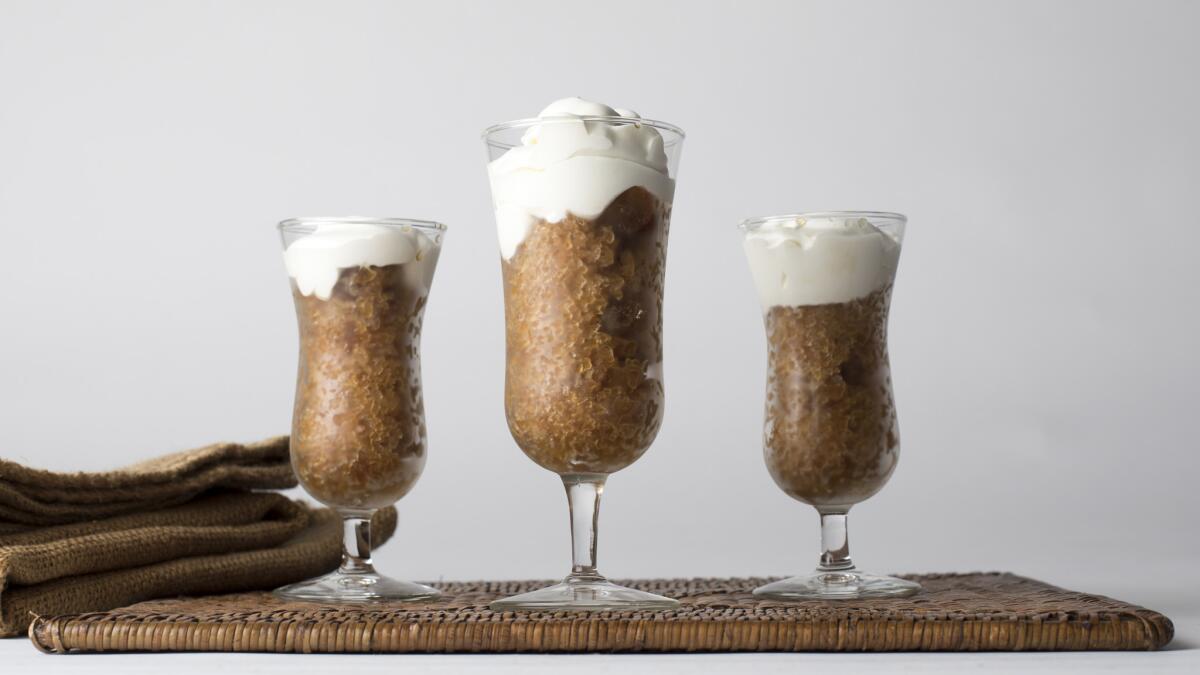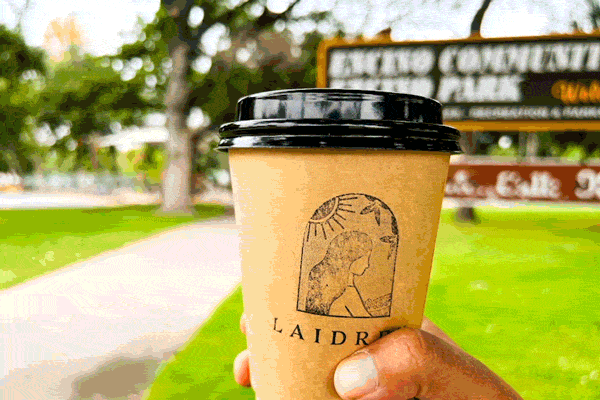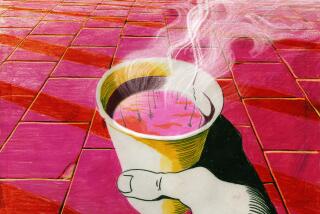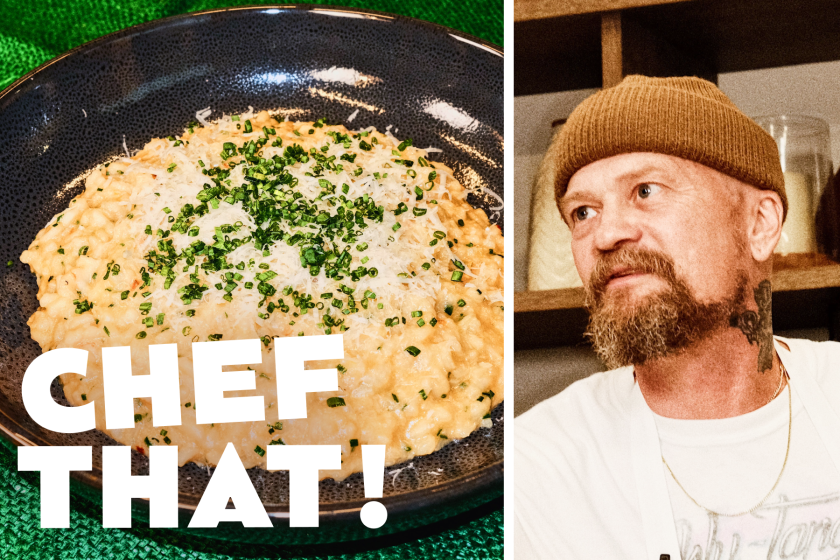How to make granita di caffe, Italian coffee granita, the caffeinated solution to a heat wave

There is no better way to jettison yourself out of overheated doldrums than an icy glass of granita di caffe con panna, a parfait of sweetened granular espresso ice layered with dollops of barely sweetened whipped cream. There is some kind of synergy between the icy chill, the sugar and the caffeine that cools and jolts you all at the same time — it’s a welcome shot in the arm when you find yourself felled by heat-induced laziness. But I’m warning you, if you have it in the freezer you might find yourself spooning a second and third serving into your glass. Talk about bulletproof.
Arguably the most popular granita di caffe in the world can be found in Rome, across from the Pantheon at Tazza d’Oro, a coffee bar and roaster that’s been serving tiny cups of black gold to customers for over 70 years.
The joy of traveling in Italy in the 1970s for the first time was that no one I knew had ever been to Rome and no one told me where I “had to go.” I found my way to Tazza d’Oro on a blisteringly hot end of summer day by just following the stream of tourists exiting the place with cups of dark ice and fluffy cream in hand. I joined the line and became mesmerized by the simplicity of how the refresher was put together.
I don’t know if it’s the same now, but back then the barmen were constantly making shots of caffé — espresso to us Americans — for counter customers. They also kept up a steady flow of shots for the granita bins. These were metal inserts that fit into indentations of a freezer counter that lined the back bar. As they worked, they added espresso to the bins (I never saw what kind of sweetener, whether sugar or syrup). Occasionally they reached in to give the mass a vigorous stir as the minutes ticked by.
It was one of the most impressive, efficient ways of doing two jobs at once I had ever seen. It was also a lesson on lack of fussiness in cooking: It is possible to create a wonderful food experience without overthinking.
It will hopefully not surprise you to learn that you can do this pretty easily at home too. And considering how hot it’s been lately in Los Angeles, this is a very happy thing. Brew some espresso, or even some strong coffee. Stir sugar to taste — remember that sweetness dulls when frozen, so it should be slightly sweeter than you might think — into the hot espresso, then pour the mixture into a cake pan and freeze. Start checking after an hour and use a fork to scrape up the icy bits. Repeat a couple more times, an hour apart, until the mixture is a blizzard of icy granules. Then spoon the stuff into a glass and top generously with whipped cream. Or just pour really good heavy cream over the coffee ice: It will freeze and mellow out the bitterness of the coffee.
Recipe: Coffee granita (granita di caffe) »
Recently, I was about to take an afternoon nap — but instead I ate two glasses of the stuff and now I’m writing this.
Most of us don’t have a Marzocco or other fabulous espresso machine at home, but don’t be daunted by this. You can use an inexpensive Italian stovetop-style metal Moka espresso brewer, as I do. Or you can just brew some really strong coffee. Or make cold brew, which will take longer but does not require making hot coffee. You’ll need to make some simple syrup so that the sugar melts, but that’s super easy and is worth doing anyway so you can use the mixture in lemonade or cocktails.
And, of course, if you don’t want to deal with making the coffee in the first place, you could just buy a few shots to-go from your local coffee spot and add the sugar at home.
While making this, I was trying to re-create a sense memory embedded back in the ’70s, so I purposely ignored the fancy third wave coffee roasts and instead used espresso-grind coffee from the supermarket. I can hear you gasp. But this whole operation is meant to remove heat stress, not create sourcing challenges. I experimented with two coffees, an all-arabica grind from longtime Los Angeles roaster Gaviña and an arabica-robusta “moka” espresso blend from Italian brand Lavazza. (Since I knew I was drinking robusta back in the day, I thought it might increase the possibility of re-creating the memory.) The result of my extremely biased experiment was that I determined that by the time you add sugar and heavy cream to the icy coffee, it doesn’t really matter what roast it is. (Coffee people: Please resist the urge to troll me.)
If you want an easy, high-quality cheat to bump up the coffee flavor, get yourself a bottle of Trablit, a French-made coffee extract that bears no relation to any coffee extract you’ve used before. Just a small spoonful will enhance the coffee flavor (and color) without adding any bitterness. It was the Angeli tiramisu secret for years.
Another way to create the fun, icy granules in the granita is to pour the sweetened coffee into a plastic zip-lock bag and freeze it. Because I am an impatient person who is easily felled by heat, I used an enormous 2-gallon bag for my freezing purposes. The thinner the layer of liquid, the faster it freezes, is my philosophy. If you’re more comfortable creating the icy granules by scraping a fork across a frozen pond of sweetened coffee in a cake pan, be my guest. But with the bag method, all you have to do is remember to walk into the kitchen every hour for three hours and squish the freezing liquid around. If it freezes too hard in spots, you can always bash it into granules with a rolling pin.
I can’t encourage you enough to try this nearly effortless way to cool off. The only downside is you might find yourself addicted to the jolt and continue making it through the cooler fall months.
Kleiman ran Angeli Caffe for 27 years. She’s the longtime host of KCRW-FM’s “Good Food” and a member of the James Beard Foundation’s Who’s Who of Food and Beverage in America.
More to Read
Eat your way across L.A.
Get our weekly Tasting Notes newsletter for reviews, news and more.
You may occasionally receive promotional content from the Los Angeles Times.










